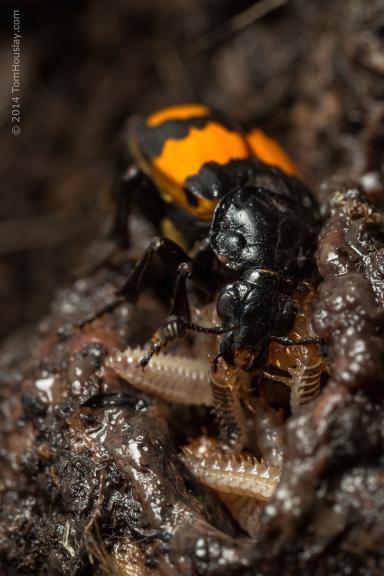
Lead supervisor: Rebecca Kilner, Zoology
Co-supervisor: James Herbert-Read, Zoology
Brief summary:
This project will determine whether selection acts on the family as a unit, as well as on the individuals within it, and investigate the evolutionary causes and consequences of multi-level selection on animal families.
Importance of the area of research concerned:
Does selection act on genes, individuals or groups? You will use a novel experimental approach to address this major outstanding question.
The evolution of family life is currently explained by considering how selection acts on the selfish interests of individual family members (and the genes within them).
Far less is known about whether selection can act on pairs, or on the family as a unit. Yet there is growing evidence from diverse taxa that group level activities are adaptive, for example: in the construction of nests or burrows; in the collective defence of key resources; or the collective capacity to exploit resources that are otherwise unobtainable. We have obtained preliminary evidence that selection acts in a similar way on the joint behaviour of pairs and the collective behaviour of the family as a whole.
Project summary :
You will focus on a common UK woodland insect: the burying beetle Nicrophorus vespilloides. Burying beetles use small vertebrate carrion for reproduction, which they convert into an edible nest for their young. Burying beetle parents stay with the nest and larvae, to feed them and defend them. Carrion is scarce, and N. vespilloides can face intense competition from congenerics and conspecifics. You will test whether competition from rivals imposes selection on pairs to work effectively to conceal the carrion nest, and on families to deplete the carrion resource rapidly.
Your work will build on answering these questions:
What kinds of activities might be coordinated at these higher levels (and which are not), and how? Does the extent of coordination differ between populations? What are the evolutionary consequences of such precision coordination among individuals?
What will the student do?:
You will combine fieldwork, using 7 wild populations we have been studying for the past three years, with experiments in the lab. You will census the Nicrophorus populations at each of our 7 ancient woodland study sites and estimate the small vertebrate carrion load in each wood by using trapping and transect data. This will enable you to estimate the extent of competition for carrion in each wood. You will then relate these measures of competition to pair and family level traits, measured in the lab separately for each population. You will run experiments to determine how rapidly and effectively pairs convert carrion into a nest, and whether they are less effective at this task when paired with a partner from a different population. With further lab experiments you will determine how quickly larvae hatch, how rapidly they can locate their carrion nest after hatching – and the cues they use to achieve this, and how swiftly the family can deplete the carrion. By mixing up families, through cross-fostering for example, you will determine whether families from different populations are co-adapted in different ways.
References - references should provide further reading about the project:
Duarte, A. et al 2021. Evolutionary change in the construction of the nursery environment when parents are prevented from caring for their young. Proceedings of the National Academy Sciences USA 118: e2102450118. doi/10.1073/pnas.2102450118
Jarrett, B. J. M. et al. 2022 Multilevel selection leads to divergent coadaptation of care-giving parents during pre-hatching parental care. BioRxiv 2022.05.23.493134
Scott, M. P. 1998 The ecology and evolution of burying beetles. Annual Review of Entomology vol. 43 pp 595-618 doi/abs/10.1146/annurev.ento.43.1.595
Applying
You can find out about applying for this project on the Department of Zoology page.